
by Ben Zackheim | Jun 19, 2014 | Writing |
How to price your ebook can be a tough decision.
Which is surprising since there aren’t many standard price points to choose from!
$.99 – $9.99
That can be broken down in fifty cent increments or one dollar increments. ($1.49, $1.99, $2.49, etc.)
Sure, you could charge $1.27, or $6.73, but price points like that tend to make customers think they’re buying a used item.
So with a max of 19 prices, how do you price your ebook?
What does the competition charge?
Get a clear picture of what people expect to pay for your kind of story.The best place to start is to look at what the competition charges in the Top 20, then price-match the books that you’d like to compete with.
For those of us who write in those annoying little gray areas where it’s tough to find the competition… well… we need to dig a little deeper to find good facts to work from.
My Shirley Link mystery series for Middle Grade to Young Adult is a perfect example. Not many indys write in this specific category, which makes it hard to price match with competitors. I’ve found that most people just won’t pay a Nancy Drew price for an indy book.
Not enough competition to price-match? Try, and try again!
After a lot of trial and error, I’ve settled on my latest pricing strategy of:
Shirley Link & The Safe Case (#1): FREE
Shirley Link & The Hot Comic (#2): $.99
Shirley Link & The Treasure Chest (#3): $2.49
Shirley Link & Black Cat (#4): $2.99
It’s a cross between the pricing strategy of Romance ebooks and Kids ebooks. Start free, make #2 cheap, then crawl up to $2.99, where I can start to make some good money.
Frankly, it’s been a tough road to find the right price for Shirley Link! But I’m definitely getting closer as I try different prices and roll out new books.
Should I go free?
Perma-free is the term we use to describe a book that is free “forever.” Many series authors make the first book in the series free because it helps increase visibility. Going perma-free, when done right, can mean higher sales for the rest of your series.
If you write a series, then do the following to decide if you should go perma-free on Amazon.
1) Do 3 Free Promo Days with book #1.
2) Measure the sales of the entire series post-promo.
3) Answer this question: If your entire series did this well all the time would you be happy? If the answer is yes, then ask a follow-up question. Would you be happy if your series did half as well all the time? If the answer to that is yes then make the first book perma-free. Why? Because the book is strong enough to act as a good entry-point for your entire series. So it’s likely that it will drive satisfying sales. If the answer to either question is no, then perma-free is probably not for you.
If your free book doesn’t rocket readers into your other books, then permafree is not a good pricing strategy.
The bottom line is this: your audience will send strong signals if your price is wrong. For instance, if you see slow sales after a successful free promo day on Amazon, then one reason could be the price point. “But I charge one buck for my ebook!” you might say.
The problem could still be with your price.
Your price may be too low.
Try jacking it up 50 cents. Yes, really. It worked for my third Shirley Link book.
One last tip is to reach out to fans. Ask them what they think the book is worth. Your readers can offer some keen insights on topics ranging from pricing to book description to, of course, story content!
How did you decide the price for your ebook? Do you experiment a lot, too?
Check out my post on how to make your book free on Amazon.
by Ben Zackheim
You may also like:
Prepare your book for its KDP Select free promotion days
Amazon KDP Select has a bridge to sell you! No, really.
The $11 Million question: Is KDP Select worth it?
Want to do more research on pricing your book? Here’s some good reading:
Smashwords survey
PBS
Nick Stephenson (with nifty graphs!)
—-

by Ben Zackheim | May 29, 2014 | Digital Identity, Writing |
NOTE: In the coming months I’m going to write about how we present ourselves online. Digital ID, as I call it, is the sum of:
After two decades of doing business online, I’ve realized that we must know who we are offline to establish the strongest Digital ID. I’ll set out to prove that thesis in my articles.
We’re all learning how to maneuver this wonderful, liberating mess together! So I look forward to hearing this community’s opinions.
—
I like the image above because it’s how I feel when I wake up in the morning and put on my marketing cap and get on Facebook. I feel like I’m immersed in a pool of people, some of us connected, some of us not, some of us wanting to be connected, some of us not. And I think it’s important to recognize that mess. I think understanding how messy things are makes it easier to understand how we feel about establishing a digital ID. And, just as importantly, what we need to do to set up our own Digital ID.
What do I mean by that?
Here’s my best explanation: I’m a strong believer in the independent storyteller’s power. Not just the power of moving people to think and act and feel, but the power to find an audience on your own that you can tell your story to.
The Slow, Agonizing, Delightful Death of the Gatekeeper
For a long time, storytellers have been ruled by gatekeepers who got to tell us, “That story is good enough and worth this much. But that one sucks and good luck!”
Those days are coming to an end.
And how do I know this?
Because I was a gatekeeper.
I told some brilliant people that their stuff wouldn’t make it in today’s market. Sometimes I was right, sometimes wrong. But the powerful emotions I felt when I saw some of them move on and do great things were undeniable.
I wasn’t regretful.
I wasn’t envious.
I was inspired.
I saw them leveraging brand new tools, online services, ways of connecting that no one had thought of. They found their audience without Viacom, ESPN, AOL, Sony and all those other places where I worked.
Those gatekeepers were wrong.
I was wrong.
For my part, I had enough confidence in my own writing talent to strike out and try this new world on for size myself.
Now, the jury is still out on whether that was a good idea. While I’m doing great, I’m not making a living wage at writing my books. But I like the trajectory and I love the process. The freedom is exhilarating.
And it’s messy. Like this post’s image.
So what does this mean for working artists?
We’re living through a fundamental shift in how people learn about us and how we learn about them. As a writer looking for an audience I know in my heart that I’ll find my readers only if I stay true to myself.
To be clear, I find the incredibly detailed tracking of people by big companies creepy. I don’t trust them with the information. The counterpoint is that most of them are sharing that data with everyone. Some charge (like FB) and some don’t (like Google). Does that make it okay? I don’t know the answer to that.
I do know that I can go online and have a universe of data on my target audience at my fingertips. If I work hard, stay true to myself and my work, I can reach them and I can make a living telling my stories. The sacrifice I make is that my interests, preferences, friends and behavior is also thrown into this messy pool of data — slicing my identity into little pieces for another artist or writer or entrepreneur to scour through and evaluate.
[Tweet "I'm a data point for someone else. And they're mine."]
It’s a fascinating, liberating, terrifying time. And I’m delighted to be a part of the mess every single day.
by Ben Zackheim | May 28, 2014 | Book Promotion, Sell your book |
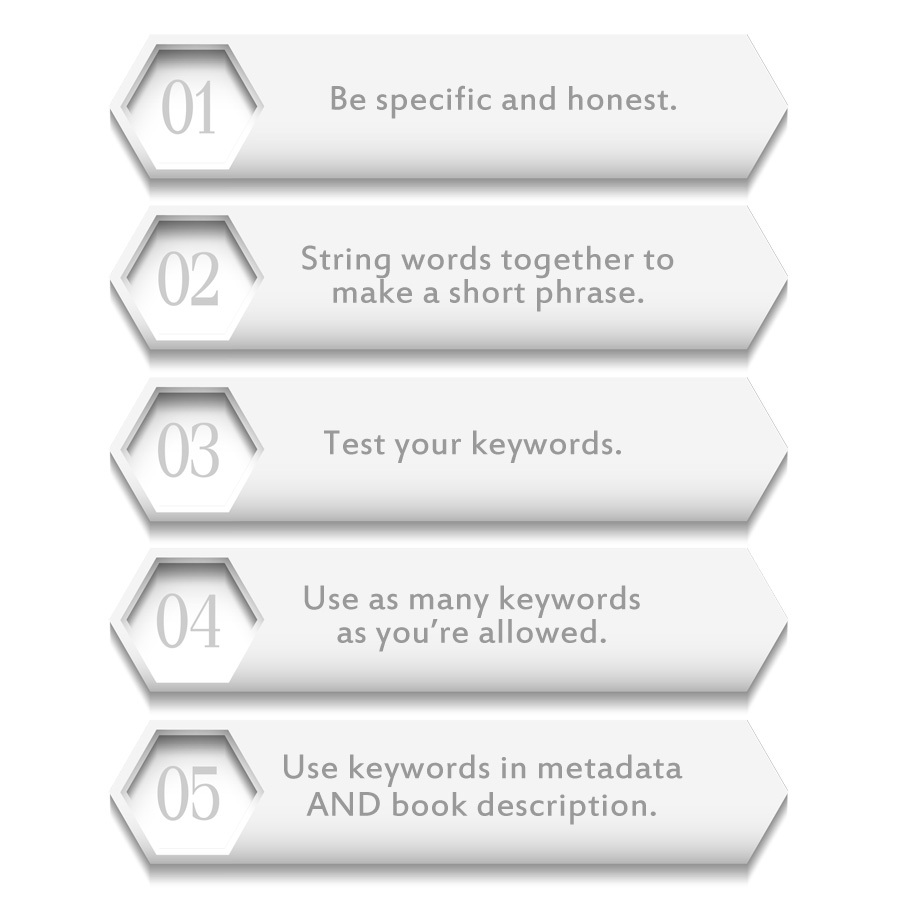
What are keywords? They’re the words you use to describe your book. Sometimes you’ll hear them called keyword phrases, but that just means keywords that are more than one word long. For example, “hero” is a keyword and “android hero” is a keyword phrase.
Amazon asks for keywords.
BN.com asks for keywords.
In fact, every site with media wants them.
But why is it so important to find keywords for your book?
Keywords are a primary way for a store to understand what your book is about. When you give your book a keyword, you’re giving it an identity. After all, “detective” paints a different picture in your head than “cooking.” Keywords are beacons, pings, scents that get picked up by search engines, recommendation bots and, oh yeah… readers.
Keywords are like perfume. If chosen wisely, they make your book more attractive to the right folks. The kind of folks who are so totally into you (and your book).
So how do you find keywords to use for your book?
How do you find keywords that will help your book get visible on the online stores?
1) Be specific and be honest.
Use words that truly describe your book, not what you think will be popular.
And when you choose the keywords, use specific terms like “android hero” instead of “hero”. This will help the book get spotted by folks with specific tastes.
2) String a couple of words together to make a short, clear phrase.
So use “mystery series for kids 9-12” instead of just “kids mystery”. These keyword terms will map well with what customers actually type into the search bar when they’re looking for a book.
Use keywords in the same way a customer would use them. Example: sleuth mysteries, not mysteries sleuth
3) Test your keywords.
Go to the online bookstores where you sell your book.
Type in one of the words you chose for your book. Notice the window that drops down?

Those are suggestions for readers to make their search easier. But it’s also list of suggestions for authors trying to find keywords for their book!
Here’s how.
Scan the list of terms in that drop-down menu. Click on the first one that truly applies to your book. Do you like the results you see for that term? Do those books look like your competition? Then use that term! It applies to your book and it’s popular enough to appear in the drop-down menu — so go for it.
4) On Amazon, be sure to use all seven keywords or short phrases.
Separate them by a comma.
5) Be sure to use your keywords in the book metadata AND in the book description.
If the scent fits, then wear it everywhere! The more you use appropriate keywords on your book’s sales page, the better your chances of connecting to the right customer.
Keep these five tips in mind while you’re prepping your book for sale. You can also follow these tips if you want to find keywords for your existing books. I’ve seen Shirley Link & The Safe Case climb up two popular lists on Amazon just by tweaking the keywords after launch.
Good luck! It can be tough to find keywords for your book that work well. But as Amazon says, “To increase your book’s discoverability on Amazon, you need descriptions and keywords that accurately portray your book’s content and use the words customers will use when they search. Along with factors like sales history and Amazon Best Sellers Rank, relevant keywords can boost your placement in search results on Amazon.com. ”
You can’t be everything to everybody. That’s a recipe for failure. So choose your scent and find your book lovers!
Other writer’s advice on how to find keywords for books:
KDP Forum Post
Lindsay Buroker
The Metanautics Department (some interesting thoughts on using Google’s keyword tool to recognize term popularity in the general population)
By Ben Zackheim
You might also like:
How to write an author bio that sells books
Choose the best genre for your book on Amazon
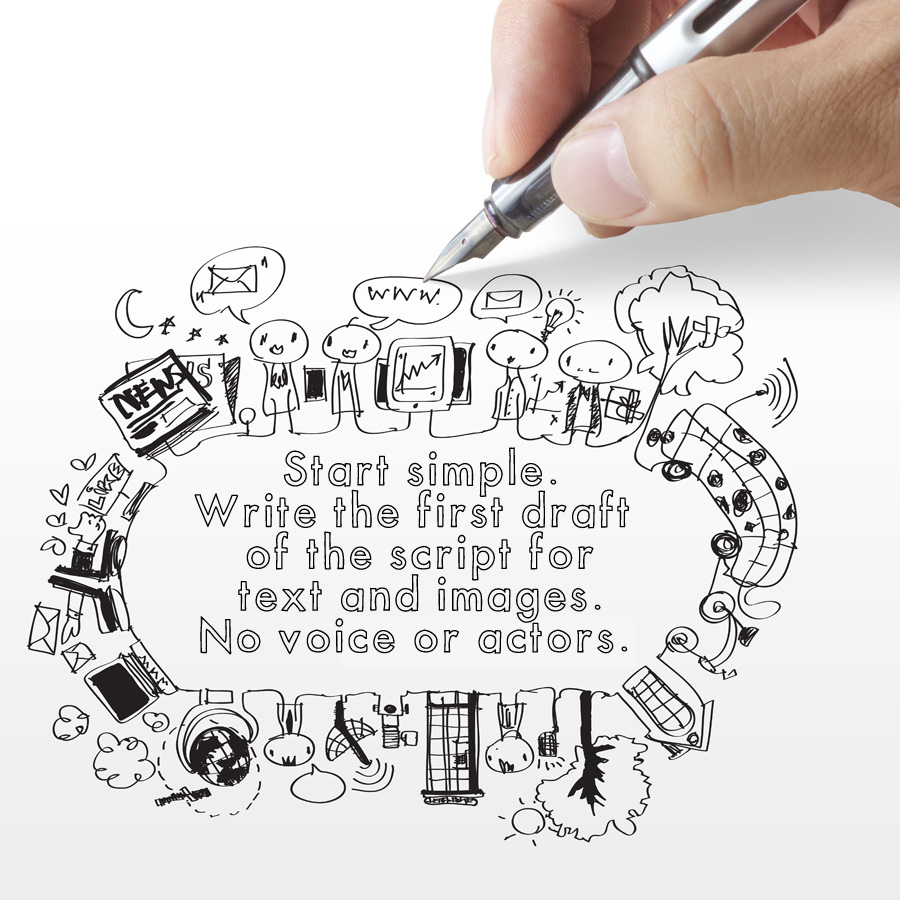
by Ben Zackheim | May 22, 2014 | Book Promotion, Sell your book, Writing |
Many of us think in words. Authors are like that. Our thoughts take on a distinct inner voice — dependent on mood, muse and cups of coffee.
So when we’re faced with the option of building a book trailer, with words and pictures and animations… well, it’s daunting.
With an NYU Film School education and several years of playing the Hollywood game, I’ve set out to craft a trailer for my upcoming series, The Camelot Kids. I’m delighted with it so far, so I thought I’d share some basic rules that have helped me focus.
Here are my impressions of what works, what doesn’t and how to avoid the common mistakes I spot in book trailers every day.
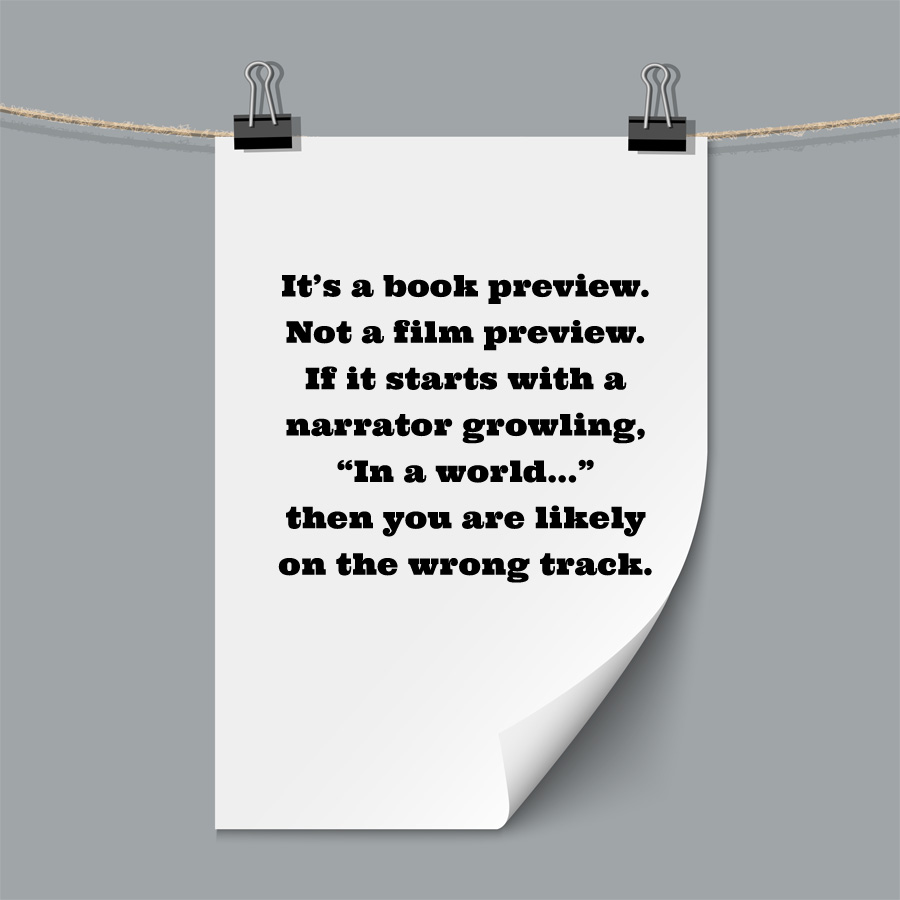

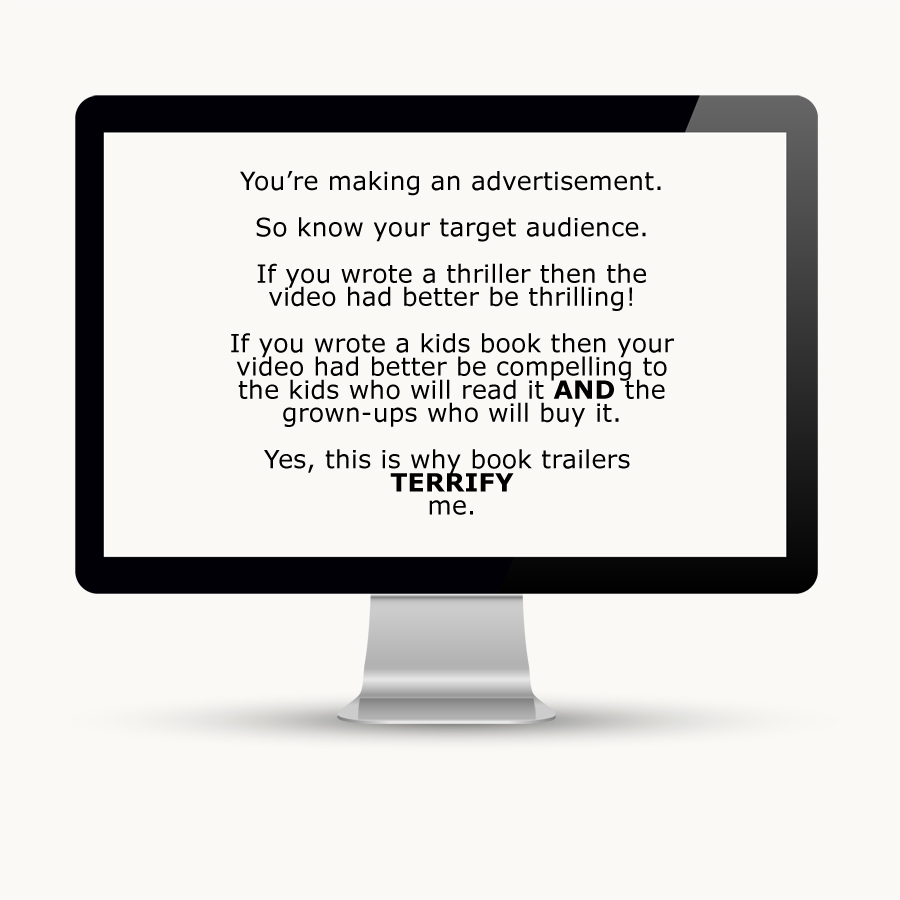
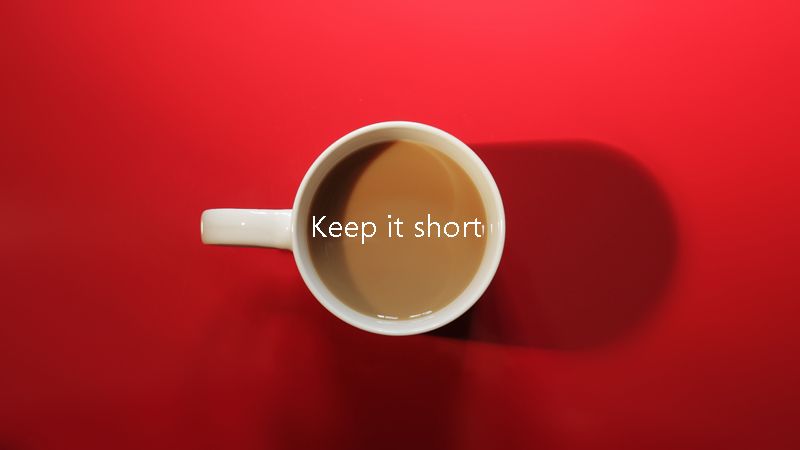
Here are some resources for you to dig into:
Tools for book trailer creation
Adobe Voice for iPad
A spectacular tool. I don’t use that word lightly. That’s the term I save in my quiver for special occasions.
The app on the iPad does everything and does it well. You can make a slick presentation within minutes. If you want to make a fast, elegant trailer that focuses on your writing style, character voices or humor then Adobe Voice can help you. Oh, and they have tens of thousands of stock images for free. The app adds the correct credit to the end of the video so you’re pretty safe.
I can’t recommend this app enough.
Prezi
Some quality book trailers have been done with Prezi tools. Like Adobe Voice, the service will help you look slick. But unlike Adobe Voice, you don’t have simple and searchable access to free, accredited images.
Graphicstock and BigStock are (as of this writing) offering a free one week trial to their library of images. You need to give a credit card to get access, but you can cancel if you don’t think the service gives you enough value.
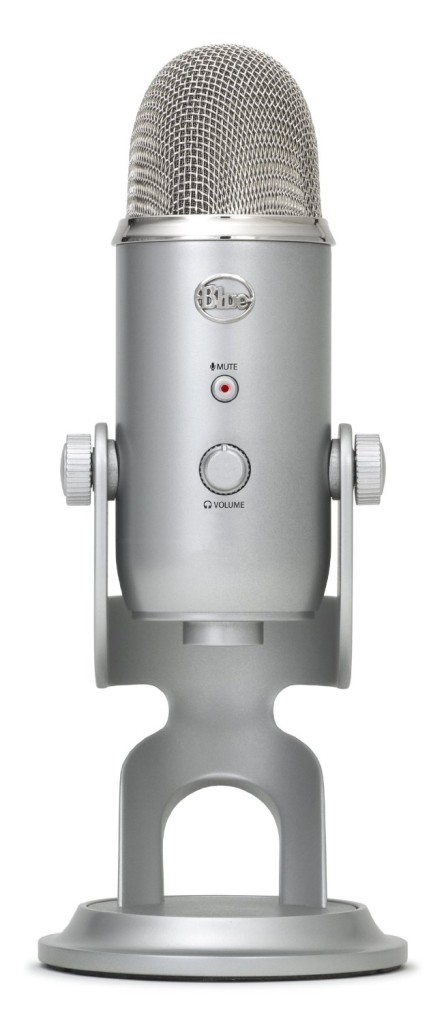 If you decide that voice is a critical component of your trailer, then you really can’t go wrong with Blue’s Yeti mic. It looks great and sounds even better. While the sensitivity can be high it’s nothing that can’t be adjusted for with a little distance from the mic.
If you decide that voice is a critical component of your trailer, then you really can’t go wrong with Blue’s Yeti mic. It looks great and sounds even better. While the sensitivity can be high it’s nothing that can’t be adjusted for with a little distance from the mic.
Book trailers that work
Fantastic book trailers and the reasons they’re so good
7 Brilliant Book Trailers
A funny piece in The New Yorker about book trailers
Have you made a book trailer? What do you think of book trailers? Let us know in the comments!
By Ben Zackheim
You might also like:
How to write an author bio that sells books
Choose the best genre for your book on Amazon
by Ben Zackheim | May 12, 2014 | Book Promotion, Sell your book |
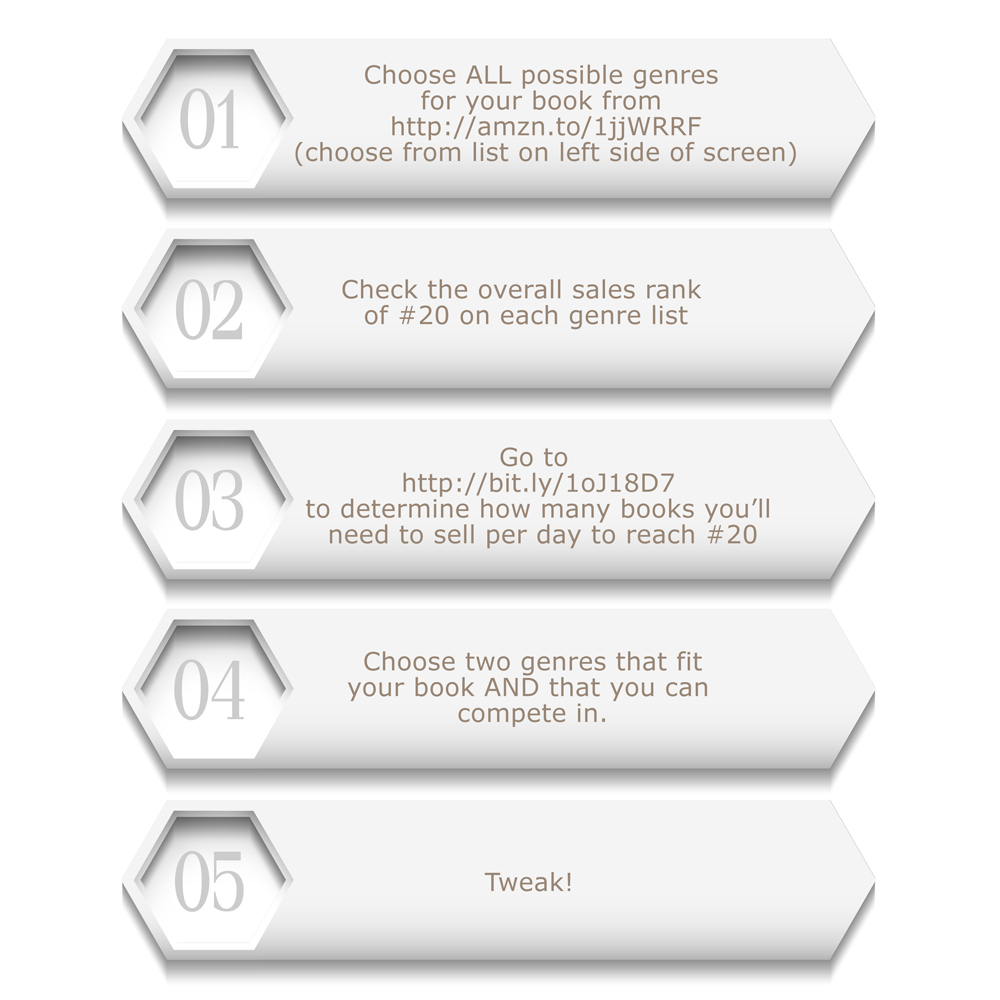
Cheat sheet. Use it once you’ve read the rest of this post!
In my last post, I covered the general rules of choosing the right genre for your book. I spoke briefly about Amazon’s categories. I’ll go into more details now.
The ground rules for Amazon categories are simple:
Every genre on Amazon gets to have its own tidy list of popular titles.
Each of these lists is often visited by fans of those genres.
Amazon scours their popularity lists for books to promote.
So how do you show up on a popular Amazon list?
Choose the right genre when you publish your book on Amazon.
Once you’ve identified which genres you belong in, you need to decide which genre is easiest for you to get in the Top 20. We’re shooting for the Top 20 because that means your book would show up on the first page of that genre’s Amazon page.
Good place to be…
After we find the easiest genre to place in, we’ll shoot for a tougher genre. Just to keep things interesting!
How to choose the right genre for your book on Amazon
Okay, let’s say we write a Mystery ebook for kids with a female detective (like oh, say, Shirley Link). Here are some of the possible categories on Amazon. I dug these up by rummaging through Amazon’s genre lists (seen on the left hand side of this page)
Kindle ebooks/Children’s ebooks/Mysteries & Detectives
Kindle ebooks/Children’s ebooks/Mysteries & Detectives/Detectives
Kindle ebooks/Children’s ebooks/Action & Adventure
Kindle ebooks/Children’s ebooks/Literature & Fiction/Beginner Readers
Kindle ebooks/Literature & Fiction/Chapter Books
Kindle ebooks/Literature & Fiction/Women’s Fiction/Mystery, Thriller & Suspense/Women Sleuths
Any of these genres would work for the book. So how do we choose which genre we can get to #20 in?
Using Theresa Ragan’s sales estimator, I get a ballpark idea of how many books I’d need to sell to crack the top 20 of each possible genre.
So the #20 book in Kindle ebooks/Children’s ebooks/Mysteries & Detectives/Detectives is Nancy Drew & The Bungalow Mystery.
But, more important to us is the book’s overall Kindle rank of 39,589 (see image below).
Checking Theresa’s sales estimator, this means the book sells between 3-15 copies per day.
Nancy Drew: The Bungalow Mystery sales rank info from the book’s product page on Amazon:

On the other hand, Kindle ebooks/Children’s ebooks/Mysteries & Detectives is a tough one. The 20th ranked book has an overall Kindle sales rank of 3,239. This means the book sells between 30-50 books per day.
Spirit Animals Book 1 sales rank info from the book’s product page on Amazon:

I think I can manage to sell 3-15 books per day, but 30-50 will take some ingenuity. If I can find a way to crack the tough Action & Adventure Top 20 list then that will mean much more exposure to more people. I’m willing to claw my way up that genre’s listings over the long haul. One good sales day could be a game changer.
Conclusion
It’s fine to choose low-popularity genres for your picks. You’re more likely to be seen by fans of those genres if you rank high! But don’t be afraid to experiment if you’re not happy with sales. Yes, it’s possible to lose sales because you’ve changed genres, but if you do it with a marketing plan to back it up then you can gain crucial customer knowledge.
If you have any questions, please ask them in the comments. Don’t forget to use the cheat sheet above. And pass it on to a writer friend.
Thanks for reading!
By Ben Zackheim
Helpful tool: Sign up for EBookTracker to get details on any book’s ranking over time. The tool won’t help you see actual sales, but it will give you insights around your favorite genre’s movers and shakers.
You might also like:
Amazon has a bridge to sell ya!
The $1.1 Million question: Is KDP Select worth it?









 If you decide that voice is a critical component of your trailer, then you really can’t go wrong with
If you decide that voice is a critical component of your trailer, then you really can’t go wrong with 
